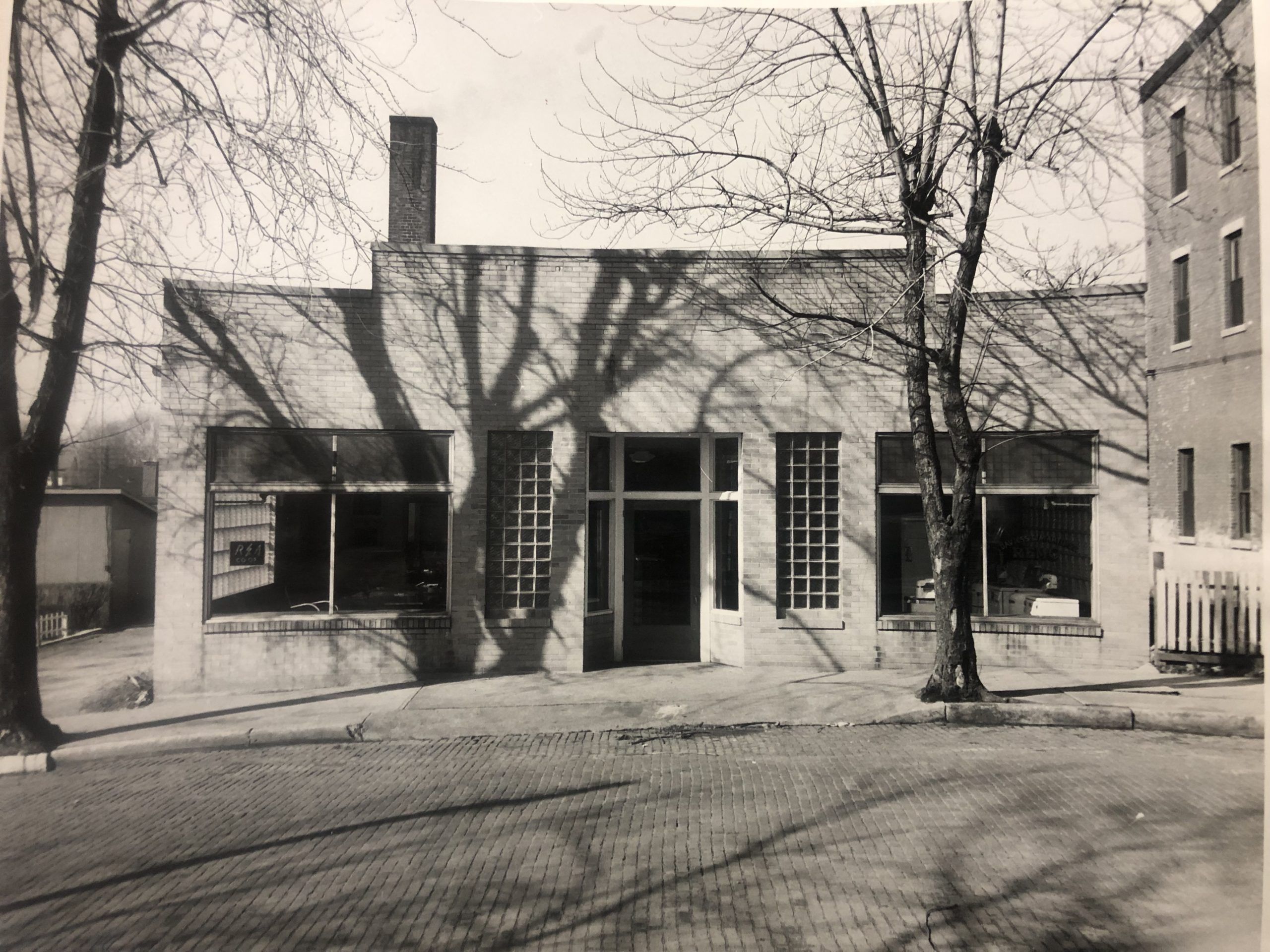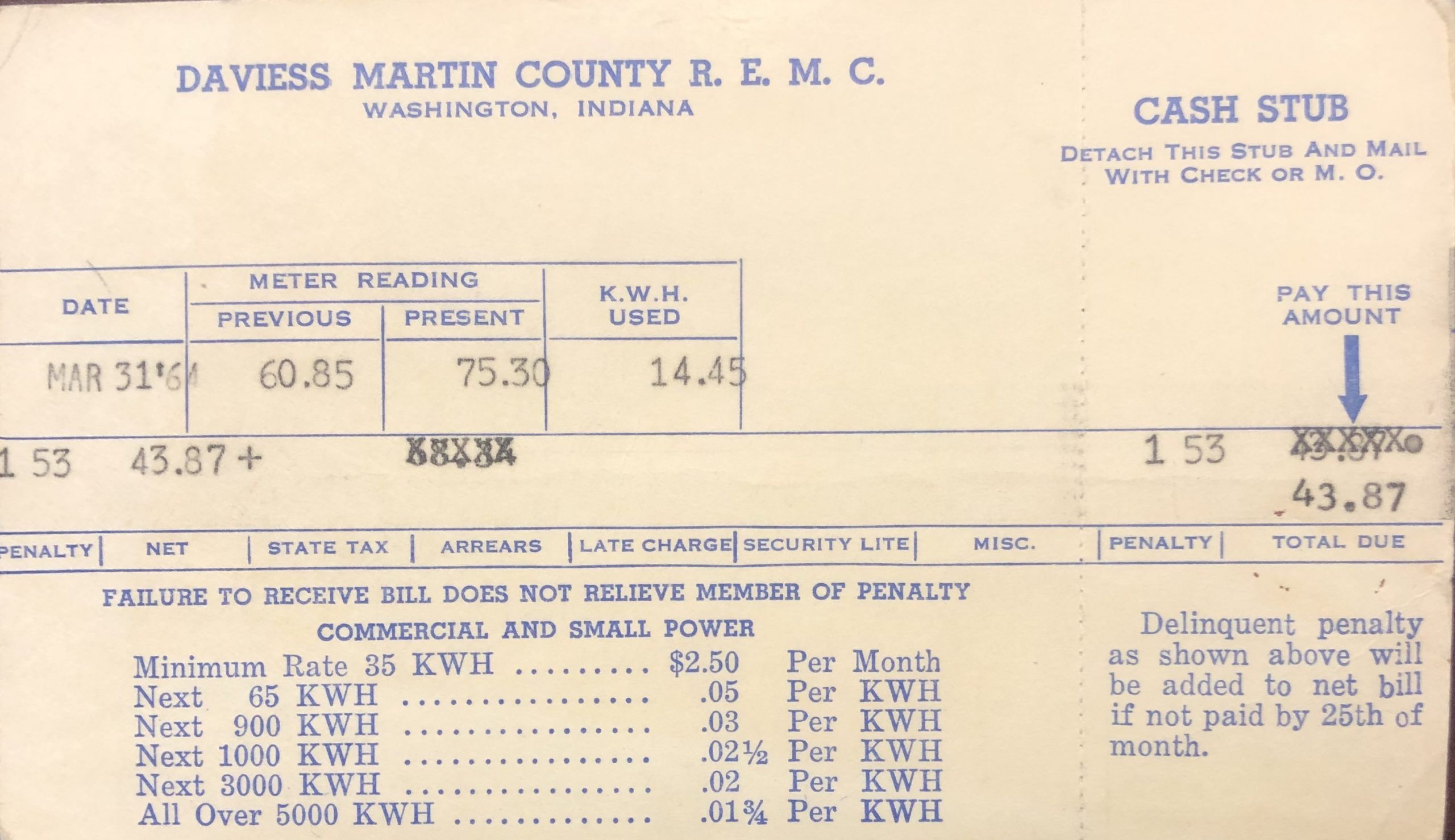The REMC was organized and incorporated in March 1939 in response to a very real need.
Until the REMC was organized, very few rural homes and farms had electricity. A few farms had “Delco” plants or relatively crude gasoline-powered generators, but these were not very reliable and were expensive to operate. Back then, however, most had only flickering, smoky coal oil lamps and lanterns. Almost all water was pumped by hand, and coal or wood was burned for heat.
In the counties now served by your REMC, farmers and other rural residents did not live as well as their friends and relatives who lived in local communities where electricity was available.
The power companies claimed it was not economically feasible to build electric lines to the homes and farms in rural areas. They said the cost would be too much and that farmers would never use enough electricity to pay off the necessary investment. Consequently, anyone in the rural areas that asked for service usually was asked to pay the cost of building the lines to the farm. This was as much as $2,000 or $3,000, an enormous amount of money, especially in those times. And, to top it off, after the lines were built, the power company owned them.
It soon became apparent that the rural people would have to do something on their own if they were to enjoy the benefits of electric service at a reasonable cost. They began organizing rural electric cooperatives, much like your REMC.
History
Indiana was one of the states that took the lead in rural electrification. The REMC Act providing the legal framework for organizing REMC’s was adopted in 1935. During that same year, President Franklin Roosevelt issued an Executive Order creating the Rural Electrification Administration as part of his emergency relief programs to fight the depression.
At that time, the government was expecting the private power companies to use the more than $100-million appropriated to build rural electric lines. The private power companies did not accept the challenge.
Consequently, the Rural Electrification Act was adopted by the Congress in 1936 to lend capital to locally owned rural electric cooperatives, such as your REMC. Let us emphasize the REA was lending money which was to be repaid with interest. These were not grants. REA, as it turned out, did not become a relief agency, but instead was transformed into a federal lending agency to supply capital to those who wanted to help themselves.
Establishing the REMC back in 1939 was a tough job. It meant holding a meeting to explain what could be done, signing up neighbors as members of the co-op, working with engineers and lawyers to set up the REMC, obtaining easements from folks, some of whom thought this was a government trick to get their land, and showing people how to wire their homes for electricity.
Here in the counties served by your REMC, some of the men who helped organize your REMC were: Austin O. Arthur, James O’Neal, George Dye, Willard Bateman, W.C. Foust, Walter Clinton, Thomas Singleton, T.A. Dant, Frank Schnarr, and John Mann.
The first employees were Fred C. Marks and Donald Rude. Among the first people in this area to receive electric service from your REMC were Harry Isenogle, Sol Moore, James Carlin, Herschel Kittery, and Paul Fuhrman.



Learn more.
When they sign a membership application and pay a membership fee, they become a part owner of the REMC. The most important fact about your REMC is that it is controlled by the people it serves. Power companies, by contrast, are owned and controlled stockholders, which may be people living in other states, or even in other countries; or stockholders may not even be people at all but other corporations or foundations.
The interests of stockholders and member-consumers are different. Stockholders are interested in lower rates and reliable service. The purpose of an REMC is to provide the best possible service at the lowest possible rates. The REMC is a non-profit business owned by its consumers. We point this out because some people believe REA or the government owns the REMC. REMEMBER that REA only is a lending agency.
Member-owners of this REMC, share ownership of the system and have an equal voice in its operation. Each member has one vote in the election of the Board of Directors (who must be members themselves) and each member has a vote in any other decisions brought up at the annual meeting of the REMC.
The Board of Directors formulates basic policies for the REMC, hires the Manager, and generally oversees the business for the members. The Manager employs the other REMC employees and is responsible for the daily operation of the REMC.
Since 1939 your REMC has grown and become an important asset not only to you, the member-consumers, but also to the community at large as well. Your REMC now provides electric service to around 7,000 members. The REMC represents and investment of more than eighteen million dollars. Part of this investment is represented by long-term debt to REA and CFC, a private lending agency owned by the nation’s REMC’s, but a portion of this investment is now equity (50%) – members equity in their own REMC business.
The importance of your REMC to the community can be described in terms of payroll, most of this is spent locally, and an increasing amount paid each year in property taxes by the REMC to local government and other tax expenses. Of course, your REMC does not pay federal income tax.
Your REMC is the result of a vision shared by many of your neighbors and relatives over eighty (80) years ago–that neighbors could join together to provide themselves an essential service that some said could not be done.
Today, that vision has been realized. The REMC, in the minds of many of those early pioneers in rural electrification, is literally a dream that came true–but only after a great deal of work.
What are the components of that vision, that dream that came true? They include reliable service at a reasonable cost, local ownership and control, consumer ownership and control, and the development of rural Indiana and rural America. Largely because of electricity the standard of living in rural Indiana is as good, and many think better, as it is in the city.